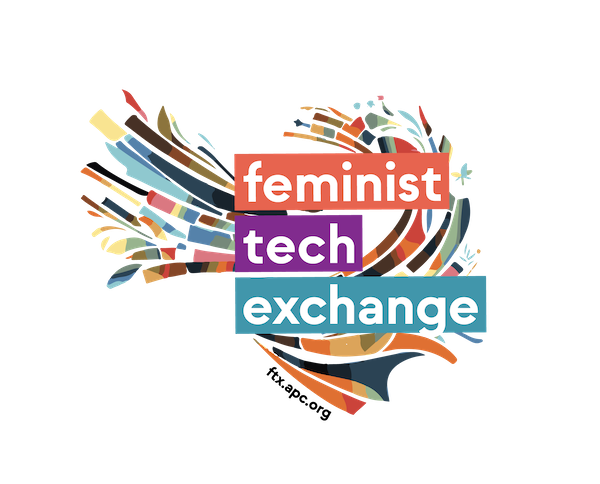Deconstructing Online GBV [Deepening Activity]
This activity takes the participants through a case study of an incident of online gender-based violence, and gets them to discuss the different aspects of the case study.
About this learning activity & Mechanics
This activity takes the participants through a case study of an incident of online gender-based violence, and gets them to discuss the different aspects of the case study.
Learning objectives this activity responds to
- An understanding of the forms of online gender-based violence (online GBV) and its impacts on the survivors and their communities.
- An understanding of the continuum of violence between the offline and the online spheres, and the power structures that allow it.
- Ideas, strategies and actions about the ways in which online GBV, especially in their contexts, can be addressed.
An important note, while this session will touch upon ideas for response, the main purpose of this activity will be to unpack an example of an online GBV incident.
Care Note: Unpacking a case study of an online GBV incident might cause participants distress.
This is not an activity to do when you do not know your participants and / or if you have not previously gained trust from the group.
In order to do this more responsibly, it is important that you are aware of the experiences of violence that your participants have (see more here: Get to know your participants), and to be observant as you run this activity about how the participants are reacting.
Encourage your participants to raise their hands if they need a break from the activity.
Knowing and having some experience in some debriefing exercises such as those found in the Capacitar Emergency Kit would be useful.
Who is this activity for?
This activity can be used with participants with different levels of experience in women's rights and technology.
Depending on the level of experience of the participants on the various aspects on relating to online GBV, the trainer / facilitator will need to prepare to intervene to clarify concepts around social media, the internet, and even national laws.
Time required
About 2 hours per case study
Resources needed for this activity
- Flip chart paper/whiteboard
- Markers
- Index cards to write down different aspects of the case study that need to be stressed.
Alternatively, you can prepare slides with the case studies and the questions.
Mechanics
You begin by describing the incident to be deconstructed, writing down the following details on individual index cards and posting them on a wall (or if you have prepared a presentation, these could be the bullet points in your slides):
- Name of the survivor + gender + social class + race + educational attainment + any other identity markers
- Country where the survivor is from + if there are laws that could protect them
- The initial incident of online violence , in which platform did this happen
- Where the incident happened , in which platform did it start
- If you can, name of the initial aggressor/s + some details, if it's important in the case study
- If the aggressor/s cannot be named, write down some details about them: their online handles, etc.
- Relationship between the survivor and aggressor, if any
Then open it up for discussion by asking the participants the following questions:
- Who else should be responsible here aside from the perpetrator?
- Who is the community around the survivor? How do you think they could have responded?
- What are the survivor's possible responses to the situation?
- How do you think this incident affected them? (impact)
Write down the responses on individual index cards and post them on the wall.
Then divulge more details of the case study, marking details that the participants have already guessed and writing down more details on individual index cards:
- How did the case escalate? In which spaces was the violence replicated?
- How did the case spill into the survivor's life outside online spaces?
- How did the community respond?
- What other spaces reinforced the initial incident of violence?
- Who else got involved?
Then open the discussion up again by asking the following questions:
- What recourse does the survivor have?
- What laws can protect them in their country?
- What other impact will this have on the survivor based on where they are from, what they do, what social class they belong to, what country they are in?
- What should happen to the initial aggressor/s? Who can make that happen?
- What should happen to the other aggressor/s, including the ones that extended and escalated the incident?
- What is the responsibility of those who own and run the platform where the incident happened?
- Who else is responsible in this scenario? What is their responsibility?
- How could the women's rights movements respond to this?
Write down the responses of the participants to each question on individual index cards and post them on the wall.
At the end of this, there will be a gallery on the wall that shows the different aspects to the case study of online GBV.
To synthesise, reinforce the following:
- The connection and continuum between online and offline violence.
- The complexity on online GBV: the varied stakeholders, both negative and positive.
- The systems and structures that facilitate online GBV as well as those that might be avenues for redress and mitigation.
Facilitator preparation notes
In order to create a relevant case study that will encourage discussion and understanding of the complexity of online gender-based violence, the case study needs to resonate with the participants, which requires knowing where they are coming from and what their concerns are [Note: There is a section here about Getting to Know Your Participants.]
The Sample Case Study below would be useful in articulating the case study that you will share in this session. It outlines the Initial Presentation and the Escalation of the example to be deconstructed.
If you want to to create your own case study:
- flesh out the survivor, where they are coming from, their contexts
- be clear about where the incident happened first and how it escalated
- think about the impact of the incident: offline / online; on the individual, their community / family / friends; on their well-being, digital security, physical security
- try to describe the perpetrator/s´ actions but not their motivations
Additional resources
Sample Case Study: Selena's Case
Initial presentation
Selena is in her final year of college. She attends college in Manila, Philippines, but she heads back to her province in Angeles every chance she gets to visit her parents and her younger siblings. In order to augment her limited funds for her studies, she is a part-time barista at a local coffee shop.
On one trip home, she finds her parents very upset. They accuse her of abusing her freedom in Manila and using her looks to meet foreign men. They slut-shame her, and threaten to cut off their support. They demand that she stop dating foreign men online and causing them problems.
Selena does not use any kind of dating app – she's too busy with school and work. And she already has a boyfriend.
After hours of her parents shouting at her, she finally gets a picture of what happened:
The day before, Heinz from Germany had knocked on her parents' door, demanding to see Selena. He brought with him copies of conversations that he has had with Selena, and the pictures that she has shared with him. Those conversations happened both on the dating app chat and on WhatsApp. He implied that he and Selena have engaged in cybersex. Apparently, he had sent Selena money so she could start applying for a German visa in order to visit him. When she did not get a visa, he had then sent her money to purchase a ticket so they could meet up in Bangkok, where they could be together without her conservative parents watching their every move. She did not show up. Heinz had tried getting in touch with her but she was unresponsive. So he felt he had no choice but to pay her parents a visit. They refused to let him in and threatened to call the authorities if he kept on insisting on seeing Selena.
Heinz had left, angry.
Sounds like a con gone wrong.
Problem: Selena is not aware of any of this. She has never talked to any Heinz. She has not received any money from him. She was not in a long-distance relationship with anyone.
It looks like Selena's pictures and identity were used to "catfish" Heinz.
(Catfishing is when someone takes screen-grabs of someone's photos online and creates accounts in their name in order to con other people. Sometimes, the real name of a person is attached to the fake account, but there have been cases where the photos are attached to fake names.)
Escalation
In response to the incident, Selena had removed all her photos from all her social media accounts, and had sent a message to the dating app and WhatsApp that the account with her pictures was a fake one that some people had used to swindle a German user.
She and her family have not heard back from Heinz. He seems to have left Angeles after her parents turned him away.
One day, at school, a few of her male classmates start heckling her, calling her a slut and a swindler, saying that it's a shame that a pretty girl like her would use her looks that way. One of Selena's friends show her a Facebook page called "Selena is a Slut Swindler". On that page, Heinz recounts what "Selena" had done to him – with screen grabs of their conversations, her pictures, and audio recordings of their cybersex sessions.
The page has trended, and has received a lot of likes and followers.
What can Selena do?
Sample Case Study: Dewi's Case
Initial presentation
Dewi is based in Jakarta, Indonesia. She is a 30-something trans woman, working as a call centre agent for a large multi-national online retail company. With two of her closest friends, Citra and Indah, she has just recently started a small organisation to promote SOGIE equality in Indonesia.
Since they started the organisation, the three of them have been invited to local events around LGBTQI+ rights and have attended demonstrations to support their advocacy. She has been captured in the local news speaking out against toxic masculinity and religious fundamentalism.
One morning, as Dewa was getting ready to go to work, she receives a message on her Facebook Messenger. It´s from an account called, Mus: ¨You made me so happy last night. Do you want to make me happy again tonight?¨ She dismisses it as a wrongly-sent message, so she responds with: ¨I think this is not for me. Wrong send.¨
To which Mus replies, ¨It is meant for you, Ms. Dewi. I saw your pictures and I want to see you in person. So you can make me happy again.¨
Scared that Mus knows her name, she just messages back and says, ¨I don´t know you, please stop.¨ She then blocks Mus.
Then more messages keep showing up from different users on her FB Messenger. The messages get progressively ruder and more explicit. She is also getting more friend requests on Facebook. She opts to block those users and tries to ignore them.
She keeps Citra and Indah updated on what is happening and her two friends are getting worried for Dewi.
To try to get to a reason as to why Dewi was being harassed, Citra Googles Dewi´s name. What they find are images in which Dewi´s face is edited on to naked transwomen´s bodies. The images are all labeled with Dewi´s name, and posted on DIY pornography sites.
Immediately, the three of them write to where the images are posted to request for the take down of the photos and of Dewi´s name on them. They all hoped that that was the end of that and the harassment would stop.
Escalation
One day, Dewi´s supervisor calls her in for a meeting. Then the supervisor shows her Twitter messages addressed to their company with a copy of the doctored images with the caption: Is this what your employees look like? What kind of morals does your company have? Fire HIM!¨
According to her supervisor, their company´s Twitter account was bombarded with the same messages from multiple accounts.
What can Dewi do?



